Solar eclipse of August 20, 1906
A partial solar eclipse occurred on August 20, 1906. A solar eclipse occurs when the Moon passes between Earth and the Sun, thereby totally or partly obscuring the image of the Sun for a viewer on Earth. A partial solar eclipse occurs in the polar regions of the Earth when the center of the Moon's shadow misses the Earth.[1]
| Solar eclipse of August 20, 1906 | |
|---|---|
 Map | |
| Type of eclipse | |
| Nature | Partial |
| Gamma | 1.3731 |
| Magnitude | 0.3147 |
| Maximum eclipse | |
| Coordinates | 70.8°N 66.4°W |
| Times (UTC) | |
| Greatest eclipse | 1:12:50 |
| References | |
| Saros | 153 (3 of 70) |
| Catalog # (SE5000) | 9295 |
Related eclipses
Solar eclipses 1902–1907
This eclipse is a member of a semester series. An eclipse in a semester series of solar eclipses repeats approximately every 177 days and 4 hours (a semester) at alternating nodes of the Moon's orbit.[2]
| Solar eclipse series sets from 1902–1907 | ||||
|---|---|---|---|---|
| Descending node | Ascending node | |||
| 108 | April 8, 1902 Partial |
113 | October 1, 1902 | |
| 118 | March 29, 1903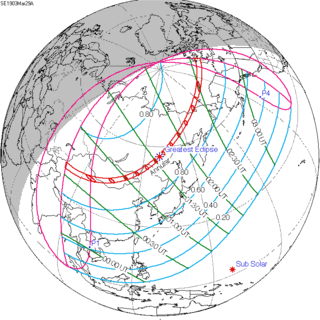 Annular |
123 | September 21, 1903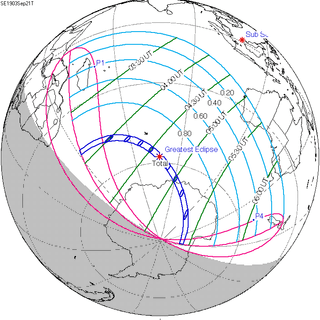 Total | |
| 128 | March 17, 1904 Annular |
133 | September 9, 1904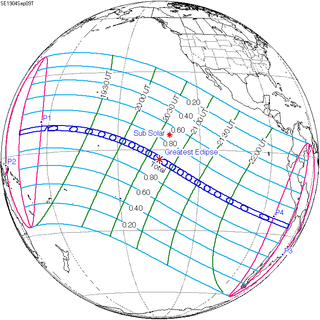 Total | |
| 138 | March 6, 1905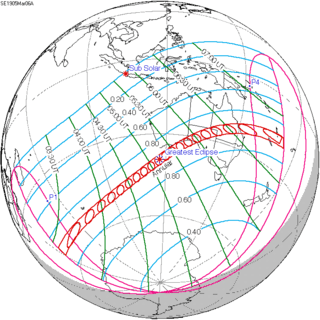 Annular |
143 | August 30, 1905 Total | |
| 148 | February 23, 1906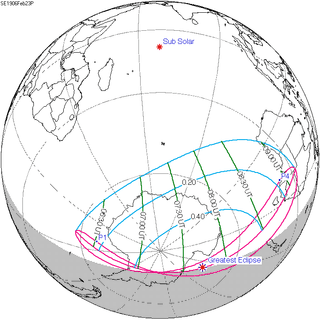 Partial |
153 | August 20, 1906 Partial | |
Notes
- "What Is a Solar Eclipse?". www.timeanddate.com. Retrieved 2020-04-24.
- van Gent, R.H. "Solar- and Lunar-Eclipse Predictions from Antiquity to the Present". A Catalogue of Eclipse Cycles. Utrecht University. Retrieved 6 October 2018.
gollark: You'd need horribly expensive specialised network equipment.
gollark: I really doubt you have 10Gbps.
gollark: I should really have planned for this eventuality.
gollark: Oh.
gollark: Must I enable ALL the orbital bee lasers?!
References
- Earth visibility chart and eclipse statistics Eclipse Predictions by Fred Espenak, NASA/GSFC
External links
This article is issued from Wikipedia. The text is licensed under Creative Commons - Attribution - Sharealike. Additional terms may apply for the media files.
.jpg)
